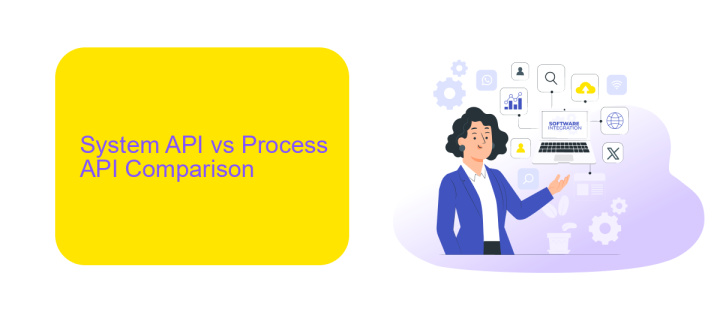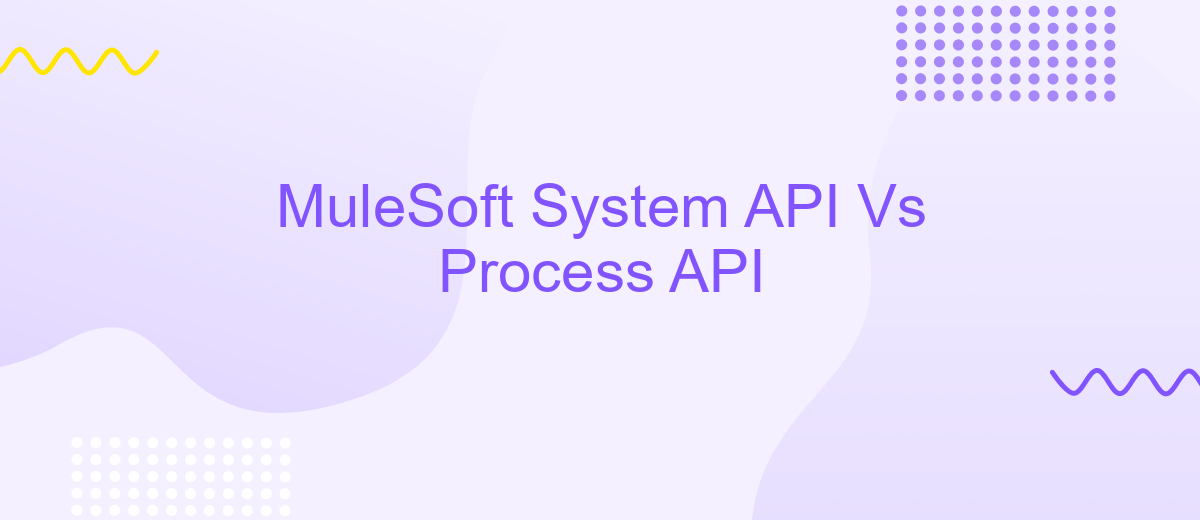MuleSoft System API Vs Process API
In today's dynamic digital landscape, the integration of various systems and processes is crucial for business agility and efficiency. MuleSoft offers robust solutions through its System APIs and Process APIs, each serving distinct purposes within an API-led connectivity approach. This article delves into the key differences between MuleSoft's System API and Process API, exploring their unique roles and benefits in streamlining enterprise operations.
Introduction
In today's rapidly evolving digital landscape, the need for seamless integration between various systems and applications is more critical than ever. MuleSoft, a leader in the integration platform as a service (iPaaS) market, offers a robust framework to facilitate this integration through its System APIs and Process APIs. Understanding the distinction between these two types of APIs is essential for optimizing your integration strategy.
- System APIs: These APIs are designed to unlock data from core systems and make it accessible to other applications.
- Process APIs: These APIs orchestrate data across multiple systems, enabling complex business processes.
Leveraging tools like MuleSoft in conjunction with ApiX-Drive can significantly enhance your integration capabilities. ApiX-Drive provides an intuitive interface for connecting various applications and automating workflows, making it easier to manage and streamline your operations. By effectively utilizing both System and Process APIs, businesses can achieve greater efficiency, scalability, and agility in their digital transformation efforts.
System API vs Process API Comparison

System APIs are designed to expose core systems of record and provide a means for accessing underlying data and services. These APIs are typically highly reusable and are responsible for managing the connectivity to the backend systems, ensuring secure and reliable access to data. For example, using a service like ApiX-Drive can simplify the integration process by providing pre-built connectors and automating data flows between different systems, reducing the need for custom development.
In contrast, Process APIs orchestrate data and processes across multiple systems and services. They are responsible for implementing business logic and ensuring that data flows in a meaningful way to support business operations. Process APIs often combine data from multiple System APIs to deliver a composite service. This abstraction allows for greater flexibility and agility in responding to changing business requirements. By leveraging tools like ApiX-Drive, organizations can streamline the creation and management of these complex integrations, ensuring seamless data orchestration and process automation.
Use Cases

MuleSoft's System API and Process API serve distinct purposes within an integration architecture, each with specific use cases. The System API is primarily used for exposing underlying systems of record, such as databases and ERP systems, in a standardized format. On the other hand, the Process API orchestrates data and processes across multiple systems to fulfill business requirements.
- System API: Ideal for creating a consistent interface for accessing data from legacy systems, making it easier to integrate with modern applications.
- Process API: Perfect for combining multiple API calls into a single, cohesive process, such as order fulfillment or customer onboarding.
- ApiX-Drive Integration: Useful for automating data transfers between various platforms without the need for extensive coding, enhancing the capabilities of both System and Process APIs.
By leveraging both System and Process APIs, businesses can achieve a more flexible and scalable integration architecture. Tools like ApiX-Drive further simplify the integration process, enabling seamless data flow and reducing the time required for implementation. This combination ensures that organizations can adapt quickly to changing business needs and technological advancements.
Best Practices

When designing MuleSoft System APIs and Process APIs, it is crucial to follow best practices to ensure efficiency, scalability, and maintainability. A well-structured API strategy can significantly enhance the performance and reliability of your integration solutions.
First, clearly define the roles of System APIs and Process APIs. System APIs should focus on exposing backend systems, while Process APIs should orchestrate data and business processes. This separation of concerns helps in managing and scaling your APIs effectively.
- Ensure consistent naming conventions for APIs to improve readability and maintainability.
- Implement robust security measures, including authentication and authorization.
- Use versioning to manage changes and ensure backward compatibility.
- Leverage monitoring tools to track performance and identify issues promptly.
- Document APIs thoroughly to facilitate understanding and usage by developers.
Additionally, consider using integration services like ApiX-Drive to automate data flows between different systems. ApiX-Drive can simplify the setup process, reduce manual intervention, and enhance the overall efficiency of your integration architecture. By adhering to these best practices, you can build resilient and scalable API solutions that meet your business needs.
Conclusion
In conclusion, understanding the distinctions between MuleSoft's System API and Process API is crucial for designing an efficient and scalable integration architecture. System APIs are designed to expose core systems and services, ensuring data accessibility and operational consistency, whereas Process APIs are focused on orchestrating and managing business processes, enabling seamless interactions across multiple systems.
By leveraging these APIs effectively, organizations can achieve greater agility and streamline their integration efforts. Tools like ApiX-Drive can further enhance this process by offering automated integration solutions, simplifying the connection between various applications and services. Ultimately, the strategic use of System and Process APIs, coupled with robust integration platforms, can significantly optimize business operations and drive digital transformation.
- Automate the work of an online store or landing
- Empower through integration
- Don't spend money on programmers and integrators
- Save time by automating routine tasks
FAQ
What is the primary difference between a System API and a Process API in MuleSoft?
When should I use a System API instead of a Process API?
Can a Process API call another Process API in MuleSoft?
How do System APIs and Process APIs contribute to the reusability of services?
Is there a service that can help automate the integration and configuration of APIs?
Time is the most valuable resource for business today. Almost half of it is wasted on routine tasks. Your employees are constantly forced to perform monotonous tasks that are difficult to classify as important and specialized. You can leave everything as it is by hiring additional employees, or you can automate most of the business processes using the ApiX-Drive online connector to get rid of unnecessary time and money expenses once and for all. The choice is yours!


